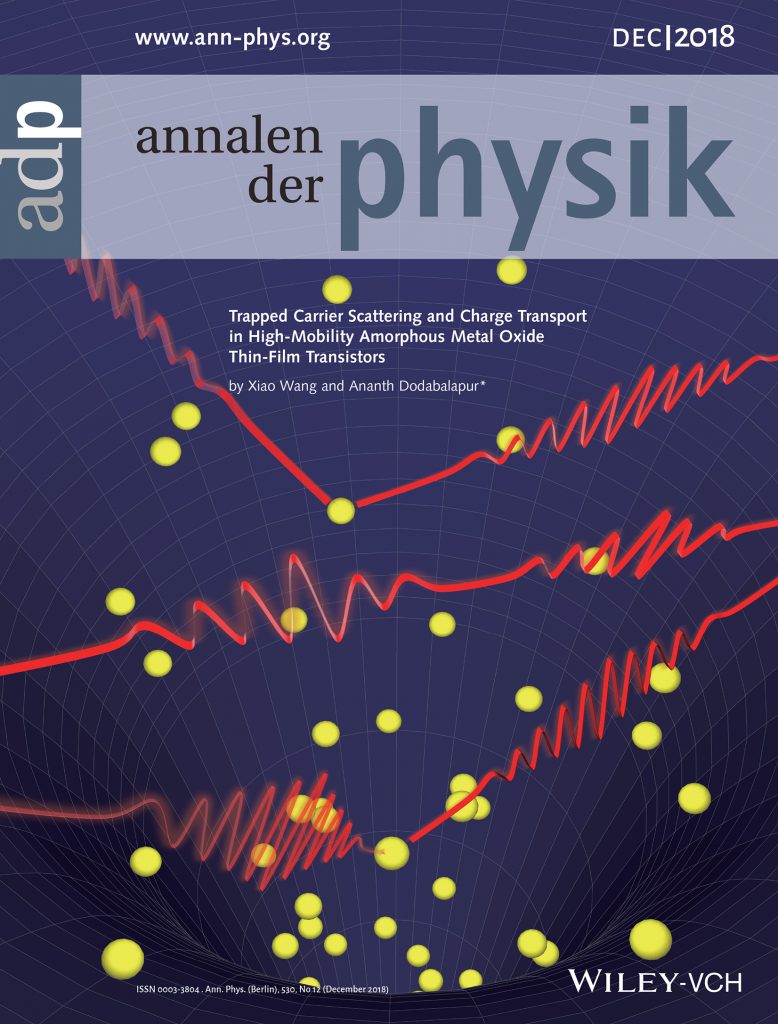Congratulations to Xiao Wang on publishing his paper “Trapped Carrier Scattering: Trapped Carrier Scattering and Charge Transport in High‐Mobility Amorphous Metal Oxide Thin‐Film Transistors” and making the cover of Annalen der Physik. In his publication, Xiao built upon the existing MTR model by including the impact of scattering and screening on extended-state transport.
Abstract
The multiple trap and release (MTR) model is extended to more completely and accurately describe charge transport in high‐mobility amorphous metal oxide thin‐film transistors (TFTs). In addition to trapping and release of charges, other scattering mechanisms that influence mobility are considered along with screening by free carriers. The mobility for each of the dominant scattering mechanisms is calculated using the Boltzmann transport equation (BTE) in the relaxation time approximation. It is found that trapped carriers very effectively scatter the charges that move in extended states. This type of scattering is unique to TFTs. Experimental data from high‐mobility amorphous metal oxide TFTs are compared with calculations with very good agreement. At high temperatures, scattering by longitudinal optical phonons and surface phonons becomes significant. This work represents the first successful combination of charge carrier scattering and the BTE with thermally activated MTR transport in a disordered semiconductor. Charge transport in amorphous metal oxide transistors is quantitatively described for the first time and the factors that influence the mobility at various temperatures and charge carrier densities are clearly described. This approach can be used for describing transport in several amorphous and polycrystalline semiconductors with significant disorder and trapping.

